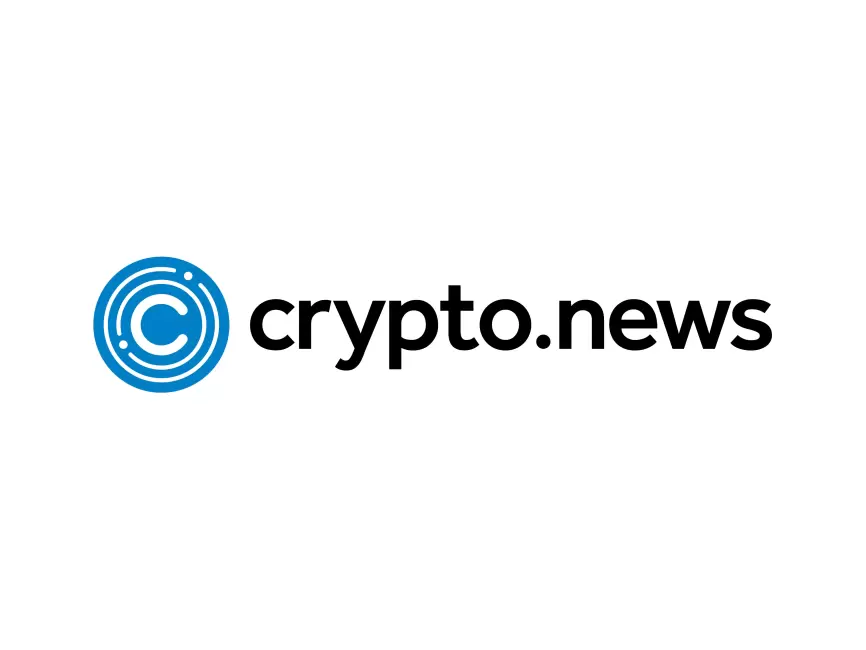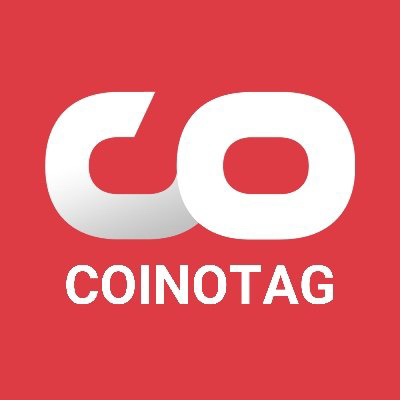
Hyperliquid priceHYPE
HYPE/USD price calculator
Hyperliquid market Info
Live Hyperliquid price today in USD
The cryptocurrency market on December 18, 2025, is characterized by a mix of regulatory advancements, significant market liquidations, and cautious price movements for major assets like Bitcoin and Ethereum. Global regulatory bodies are moving towards clearer frameworks for digital assets, while price action in Bitcoin and Ethereum faces headwinds from various factors, including macroeconomic uncertainties and investor sentiment.
Regulatory Landscape Evolves Globally
2025 has emerged as a pivotal year for crypto regulation, marking a shift from enforcement-led actions to the implementation of comprehensive, upfront frameworks worldwide. Jurisdictions are now providing clearer guidance and arrangements aimed at fostering innovation while mitigating risks. This change offers both clarity and new compliance challenges for crypto companies and financial institutions operating across multiple markets.
In the United States, significant progress has been made with the passage of the GENIUS Act in July, establishing the first federal stablecoin framework. Banking regulators have also reversed previous policies, now allowing banks to offer crypto services. Discussions are ongoing in the Senate regarding a crypto market structure bill, focusing on dividing regulatory oversight between the SEC and the CFTC, and addressing decentralized finance (DeFi) and ancillary assets. A bipartisan discussion draft in the U.S. Senate aims to grant new authority to the Commodity Futures Trading Commission (CFTC) to regulate digital commodities, though the definition of these commodities still varies across proposed legislation.
The UK is also advancing its crypto regulatory regime. HM Treasury announced on December 15, 2025, the laying of the Financial Services and Markets Act 2000 (Cryptoassets) Regulations 2025. These regulations, expected to come into force from 2027, will introduce new regulated activities for cryptoassets, including operating trading platforms, issuing stablecoins, and cryptoasset staking. The Financial Conduct Authority (FCA) has concurrently opened consultations on its proposed rules and guidance for these activities, aiming to develop a competitive and sustainable UK cryptoasset sector.
Bitcoin Navigates Critical Price Zones Amid Macro Uncertainty
Bitcoin's price is currently hovering around $86,000, testing a critical support zone around $81,300. This level is considered crucial due to Bitcoin's historical correlation with global liquidity trends, which currently suggest a fair value much higher, potentially around $180,000. Despite this, Bitcoin has experienced a 5% decline year-to-date, contrasting with the S&P 500's 15% advance.
Wall Street analysts from Standard Chartered and Bernstein anticipate Bitcoin could reach $150,000 in 2026, driven by institutional adoption fueled by spot Bitcoin ETFs. However, historical patterns following halving events suggest a potential decline into late 2026 or early 2027 before a gradual rebound. Recent data shows sustained outflows from U.S.-listed spot Bitcoin ETFs, intensifying price pressure and indicating a market in consolidation.
Ethereum Faces Selling Pressure and Network Development
Ethereum has seen a notable pullback, with its price slipping under $2,900 and trading around $2,800. The network is experiencing growing sell pressure and declining on-chain activity, with weekly active addresses falling to a one-year low. Outflows from U.S. spot Ethereum ETFs, particularly BlackRock's ETHA fund, have contributed to this pressure, alongside significant liquidations of leveraged long positions.
Despite price struggles, Ethereum's execution throughput is at an all-time high following the recent Fusaka upgrade. Developers are also preparing to increase the network's gas limit from 60 million to 80 million units post-January 7 hard fork, aiming to enhance throughput and reduce transaction fees. Rollups like Base are increasingly processing more activity than Ethereum itself, solidifying Ethereum's role as a settlement layer. Institutional interest in Ethereum remains, with Bitwise projecting new highs for ETH as ETFs are expected to acquire more than 100% of its new supply by 2026.
Significant Market Liquidations and Altcoin Performance
The crypto derivatives market experienced substantial liquidations in the last 24 hours, totaling over $540.98 million, affecting more than 153,000 traders. Ethereum led these liquidations with approximately $167.27 million, followed by Bitcoin at around $159.43 million, and Solana (SOL) with about $31.15 million. These liquidations were predominantly from long positions, indicating a market correction against bullish expectations.
Beyond BTC and ETH, XRP ETFs have shown resilience, pulling in $18.99 million in net inflows and pushing total assets past the $1 billion mark. XRP has notably outperformed many altcoins this cycle. Other altcoins like Solana, Dogecoin, and Cardano are generally experiencing declines, with Dogecoin dropping over 4% in 24 hours and Cardano falling more than 3% today. The overall altcoin segment shows weak demand, with the total crypto market capitalization dropping amid sustained selling pressure across large-cap and mid-cap tokens.
Upcoming Economic Data and Events
Today, December 18, 2025, market attention is focused on the release of U.S. Consumer Price Index (CPI) data for November, which could influence the Federal Reserve's interest rate decisions and broader market sentiment. Other notable events include token unlocks for projects like Jupiter (JUP), Hyperliquid (HYPE), and LayerZero (ZRO), which could introduce further market volatility as previously locked funds become accessible.
In conclusion, the crypto market on December 18, 2025, presents a complex picture of maturing regulation, cautious but fundamentally strong long-term outlook for major assets like Bitcoin and Ethereum despite immediate price pressures, and significant short-term volatility marked by substantial liquidations. The interplay of macroeconomic factors, regulatory developments, and shifting investor sentiment will continue to shape the market's trajectory.
Do you think the price of Hyperliquid will rise or fall today?
Now that you know the price of Hyperliquid today, here's what else you can explore:
How to buy Hyperliquid (HYPE)?How to sell Hyperliquid (HYPE)?What is Hyperliquid (HYPE)What would have happened if you had bought Hyperliquid (HYPE)?What is the Hyperliquid (HYPE) price prediction for this year, 2030, and 2050?Where can I download Hyperliquid (HYPE) historical price data?What are the prices of similar cryptocurrencies today?Want to get cryptocurrencies instantly?
Buy cryptocurrencies directly with a credit card.Trade various cryptocurrencies on the spot platform for arbitrage.Hyperliquid price prediction
When is a good time to buy HYPE? Should I buy or sell HYPE now?
What will the price of HYPE be in 2026?
In 2026, based on a +5% annual growth rate forecast, the price of Hyperliquid(HYPE) is expected to reach $26.15; based on the predicted price for this year, the cumulative return on investment of investing and holding Hyperliquid until the end of 2026 will reach +5%. For more details, check out the Hyperliquid price predictions for 2025, 2026, 2030-2050.What will the price of HYPE be in 2030?
About Hyperliquid (HYPE)
What Is Hyperliquid?
Hyperliquid is a decentralized perpetual exchange (DEX) built on a high-performance Layer 1 (L1) blockchain. Designed to meet the demands of modern decentralized finance (DeFi), Hyperliquid focuses on offering a seamless, transparent, and secure platform for trading perpetual contracts. Unlike many other decentralized exchanges, Hyperliquid operates a fully on-chain order book, providing real-time and transparent trading of digital assets with minimal latency.
Hyperliquid aims to solve several challenges that exist within the DeFi space, such as poor market infrastructure, inefficient order matching, and high latency. By leveraging cutting-edge blockchain technology, Hyperliquid enables traders to execute complex strategies while benefiting from the security and transparency of a decentralized system.
How Does Hyperliquid Work?
At its core, Hyperliquid is built around a high-speed Layer 1 blockchain optimized for derivatives trading, specifically perpetual contracts. It uses a custom-built consensus algorithm called HyperBFT to achieve low-latency, high-throughput transaction processing. This algorithm ensures that trades, orders, and liquidations are executed in real-time, with each transaction occurring transparently on-chain.
-
Perpetual Order Book DEX
The flagship product of Hyperliquid is its on-chain perpetual order book exchange. Unlike other decentralized exchanges that rely on automated market makers (AMMs), Hyperliquid uses a traditional order book system where traders can place bids and asks for various assets. This design mimics the familiar trading experience of centralized exchanges, making it appealing to both retail traders and professional market participants.
Every order, cancellation, and trade is executed on-chain, ensuring full transparency. The platform currently supports up to 100,000 orders per second, with plans to scale this as needed. Orders are matched based on price-time priority, ensuring fair execution for all participants.
-
Clearinghouse and Margining System
Hyperliquid operates with a decentralized clearinghouse that manages users' margin balances and positions. The platform supports both cross-margin and isolated-margin trading modes. Cross-margin allows traders to share collateral across multiple positions, while isolated margin dedicates specific collateral to individual positions, reducing liquidation risk for other open trades.
-
Oracle and Pricing Mechanism
To ensure accurate pricing and margin calculations, Hyperliquid relies on a decentralized oracle system. Validators on the network publish spot prices from major cryptocurrency exchanges like Binance, OKX, and Bybit every three seconds. These prices are then used to calculate funding rates, manage margin levels, and trigger liquidation events. This decentralized price feed helps maintain the integrity of the platform and reduces the risk of manipulation.
-
Bridge and Interoperability
Hyperliquid includes an Ethereum Virtual Machine (EVM) bridge, allowing users to transfer assets between Ethereum-based networks and the Hyperliquid L1. The bridge is secured by the same validator set that operates the L1, and it ensures safe transfers of assets like USDC and ETH across chains. Users can deposit or withdraw funds using the bridge, which is designed to handle high transaction volumes securely and efficiently.
-
API and Developer Tools
Hyperliquid provides a set of API servers that allow developers and traders to integrate automated trading strategies. These APIs are permissionless and offer both REST and WebSocket services. Traders can use these APIs to execute complex trading algorithms, while developers can create custom tools and dashboards to interact with the platform.
-
Vaults and Liquidity Provision
Vaults are another core feature of Hyperliquid, allowing users to participate in liquidity provision and earn a share of trading profits. Vaults are flexible and can be managed by individuals or automated systems. The most prominent vault is the Hyperliquidity Provider (HLP), which enables community members to participate in market-making and liquidation strategies typically reserved for large institutions. Vaults have lock-up periods, and depositors earn a portion of the profits based on their contributions.
-
Native Token Standards and Hyperliquidity
Hyperliquid also features its own native token standard (HIP-1), which allows for the creation of capped-supply tokens that can be traded on the platform’s order books. Additionally, HIP-2 introduces a decentralized liquidity provisioning system known as Hyperliquidity, which automates liquidity provision for new tokens, ensuring deep order book liquidity even during the early stages of price discovery.
Conclusion
Hyperliquid is a decentralized perpetual exchange designed to meet the high demands of DeFi traders. By operating a high-performance Layer 1 blockchain, it provides a fast, transparent, and secure trading environment for perpetual contracts. With a comprehensive margining system, decentralized oracles, and tools for liquidity provision, Hyperliquid is positioning itself as a key player in the evolving landscape of decentralized finance.
Bitget Insights



HYPE/USD price calculator
HYPE resources
What can you do with cryptos like Hyperliquid (HYPE)?
Deposit easily and withdraw quicklyBuy to grow, sell to profitTrade spot for arbitrageTrade futures for high risk and high returnEarn passive income with stable interest ratesTransfer assets with your Web3 walletWhat is Hyperliquid and how does Hyperliquid work?
Global Hyperliquid prices
Buy more
FAQ
What is the current price of Hyperliquid (HLI)?
What factors influence the price of Hyperliquid?
What is the price prediction for Hyperliquid in the next year?
Is Hyperliquid a good investment based on its price trends?
How does Hyperliquid's price compare to its competitors?
What are the historical price trends of Hyperliquid?
What events could affect the future price of Hyperliquid?
Can I set price alerts for Hyperliquid on Bitget Exchange?
Where can I find the best trading conditions for Hyperliquid?
What is the all-time high price for Hyperliquid?
What is the current price of Hyperliquid?
What is the 24 hour trading volume of Hyperliquid?
What is the all-time high of Hyperliquid?
Can I buy Hyperliquid on Bitget?
Can I get a steady income from investing in Hyperliquid?
Where can I buy Hyperliquid with the lowest fee?
Related cryptocurrency prices
Prices of newly listed coins on Bitget
Hot promotions
Where can I buy Hyperliquid (HYPE)?
Video section — quick verification, quick trading









